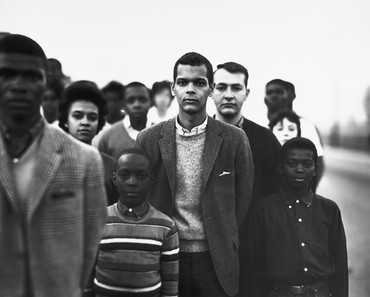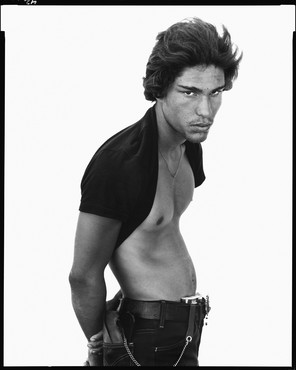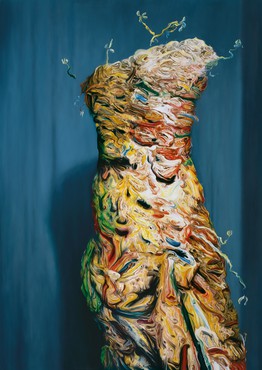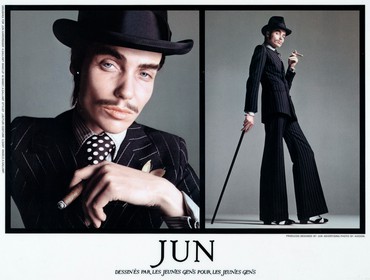About
Photography for me has always been a sort of double-sided mirror. The one side reflecting my subject, the other reflecting myself.
—Richard Avedon
Gagosian is pleased to announce Iconic Avedon: A Centennial Celebration of Richard Avedon, at the gallery on rue de Ponthieu, Paris, from January 22 to March 2, 2024. The exhibition marks the centenary of Avedon’s birth in May 1923. Often attributed to his photographs, the word iconic applies equally to their maker, and is used here to illuminate his exceptional influence on culture today.
Soon after establishing his New York studio in the mid-1940s, Avedon developed an inventive, sophisticated, and instantly recognizable style. As a staff photographer for Harper’s Bazaar (1944–65), and later Vogue (1966–88), he produced many of the publications’ quintessential images. As Avedon’s reputation grew, the defining figures of the twentieth century—performers, writers, artists, intellectuals, and other notables—were drawn to see themselves through his lens. Avedon produced images that became synonymous with the legends of his sitters. Featuring his photographs of subjects both renowned and obscure, the exhibition highlights the innovative role Avedon played as a creator of icons.
Avedon’s most incisive portraits manifest his uncanny ability to elicit the singular vitality of his sitters, inscribing their charged essences—even those of the already famous—in decisive frames extracted from the larger arc of living history. His portrayals of Marian Anderson (1955), Marilyn Monroe (1957), Bob Dylan (1965), and the Beatles (1967) are as indelible as they are timeless. “It’s not the way I look,” Harold Brodkey remarked about his portrait by Avedon, “but the way I am.” With an unerring eye, impeccable timing, and a prescient sensibility, Avedon vaulted the models Dovima (1955), China Machado (1958), and Penelope Tree (1967) to the pinnacle of their profession. He also recorded incomparable images of Charlie Chaplin (1952), Jacqueline Kennedy (1961), Andy Warhol (1969), and Tina Turner (1971) at pivotal moments in their storied lives.
La photographie a toujours été pour moi une sorte de miroir à double-face. Un côté reflétant mon sujet, l’autre me reflétant moi-même.
— Richard Avedon
Gagosian a le plaisir d’annoncer Iconic Avedon: A Centennial Celebration of Richard Avedon, à la galerie de la rue de Ponthieu à Paris, du 22 janvier au 2 mars 2024. L’exposition marque le centenaire de la naissance d’Avedon en mai 1923. Souvent attribué à ses photographies, le terme iconique s’applique autant aux œuvres qu’à leur auteur, le terme est ici utilisé dans le titre de l’exposition pour souligner son influence exceptionnelle sur la culture d’aujourd’hui.
Peu après avoir installé son atelier à New York au milieu des années 1940, Avedon a développé un style à la fois inventif, sophistiqué et immédiatement reconnaissable. Photographe pour Harper’s Bazaar (1944–65) puis Vogue (1966–88), il a réalisé des images parmi les plus novatrices et les plus marquantes. A mesure que sa notoriété grandissait, les figures majeures du vingtième siècle – performeurs, écrivains, artistes, intellectuels et autres personnalités – ont fait appel à lui pour se découvrir sous son objectif. Avedon a produit des images qui sont devenues synonymes de la légende de leur modèle. En présentant ses photographies de célébrités et d’inconnus, l’exposition souligne le rôle fondamental d’Avedon en tant que créateur d’icônes.
Les portraits les plus marquants d’Avedon témoignent de sa capacité incroyable à capturer la singularité de ses modèles et saisir leur essence sur le vif, les portant – même ceux qui sont déjà célèbres – au rang de figures illustres de notre histoire vivante. Ses portraits de Marian Anderson (1955), Marilyn Monroe (1957), Bob Dylan (1965) et des Beatles (1967) sont autant iconiques qu’intemporels. « Ce n’est pas moi dans mon apparence » observe un des modèles d’Avedon, Harold Brodkey, sur son portrait, « c’est moi dans mon essence ». Grâce à un œil infaillible, un timing impeccable et une sensibilité visionnaire, Avedon a propulsé Dovima (1955), China Machado (1958) et Penelope Tree (1967) au sommet de leur profession. Il a également réalisé des portraits exceptionnels de Charlie Chaplin (1952), Jacqueline Kennedy (1961), Andy Warhol (1969) et Tina Turner (1971) à des moments-clés de leur vie.
Ouvrant lors de la semaine de la Haute-Couture à Paris, Iconic Avedon témoigne de ses liens profonds avec la capitale française qui fut sa première source d’inspiration. Après s’être rendu à Paris en 1947, Avedon y est souvent retourné afin de photographier les collections de la Fashion Week pour Harper’s Bazaar. Il a ainsi collaboré avec des éditeurs comme Carmel Snow, Diana Vreeland et Nancy White mais aussi des créateurs comme Christian Dior, façonnant une nouvelle vision audacieuse de la femme moderne et faisant à nouveau rayonner la grande ville après la Seconde Guerre mondiale. Représentant ses modèles en mouvement et dans la rue, libérés du cadre confiné de l’atelier, il a réalisé parmi ses photographies les plus connues à Paris, notamment Dovima et les éléphants (1955) et Brigitte Bardot (1959). C’est également à Paris qu’il a réalisé les portraits, évoquant l’élégance de la moitié du vingtième siècle et aujourd’hui considérés comme des classiques, de Dorian Leigh (1949), Suzy Parker (1957–58), Coco Chanel (1958) et Alberto Giacometti (1958), qui sont présentés dans cette exposition.
Largement imité, Avedon s’est sans cesse questionné afin de se réinventer, tout particulièrement lors de ses commissions ou de ses projets personnels. Privilégiant par la suite un fond blanc et uni, les contrastes de tons et les poses frontales, il s’est intéressé à des sujets qui étaient, jusqu’alors, dans l’ombre des projecteurs, les érigeant eux aussi en icônes. L’exposition parisienne comprend notamment sa représentation saisissante de William Casby en 1963, l’une des dernières personnes à être née en tant qu’esclave ; The Family (1976), montre un groupe d’hommes de pouvoir américains posant à l’occasion du bicentenaire des États-Unis ; des images issues de la série In the American West (1979–84), son exploration captivante du cœur de l’Amérique, ainsi que sa représentation candide de la sculptrice June Leaf (1975), un portrait monumental qu’Avedon considérait comme l’un de ses préférés.
Conscient de son pouvoir en tant que créateur d’images, Avedon se soumet parfois lui-même à sa propre représentation. Dans un autoportrait qu’il a réalisé dans un photomaton l’année où il publie Nothing Personal (1964), créé avec son ancien camarade de classe James Baldwin, il recouvre la moitié gauche de son visage d’une partie du portrait de son collaborateur (Baldwin n’ayant pu se joindre à la séance). Avedon souligne ainsi leur lien, peu après l’adoption mouvementée de la loi sur les droits civils. Dans un autoportrait plus tardif datant de 1993, les contours rugueux du visage d’Avedon, âgé de 69 ans, apparaissent sans aucun apparat.
L’exposition Iconic Avedon, dont la scénographie a été conçue par Cécile Degos, fait suite à l’exposition Avedon 100 qui s’est tenue en 2023 à la galerie de New York, qui présentait des photographies sélectionnées par plus de 150 personnalités de premier plan : artistes, créateurs, musiciens, écrivains, commissaires d’exposition, figures de la mode, qui témoignent, dans le catalogue de l’exposition, de l’impact de l’œuvre du photographe aujourd’hui.
Presse
Gagosian
press@gagosian.com
Toby Kidd
tkidd@gagosian.com
+44 7551 562067
Karla Otto
Ottavia Palomba
ottavia.palomba@karlaotto.com
+33 6 6788 3229
#RichardAvedon
Artist
Press
Gagosian
press@gagosian.com
Toby Kidd
tkidd@gagosian.com
+44 7551 562067
Karla Otto
Ottavia Palomba
ottavia.palomba@karlaotto.com
+33 6 6788 3229

Everywhere Light
Jake Skeets reflects on Richard Avedon’s series In the American West, focusing on the portrait of his uncle, Benson James.
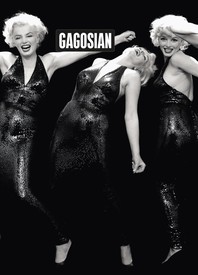
Now available
Gagosian Quarterly Summer 2023
The Summer 2023 issue of Gagosian Quarterly is now available, featuring Richard Avedon’s Marilyn Monroe, actor, New York, May 6, 1957 on its cover.

Avedon 100
In celebration of the centenary of Richard Avedon’s birth, more than 150 artists, designers, musicians, writers, curators, and representatives of the fashion world were asked to select a photograph by Avedon for an exhibition at Gagosian, New York, and to elaborate on the ways in which image and artist have affected them. We present a sampling of these images and writings.

Book Corner
Self-Portrait in a Convex Mirror
Wyatt Allgeier discusses the 1984 Arion Press edition of John Ashbery’s Self-Portrait in a Convex Mirror, featuring prints by Richard Avedon, Alex Katz, Elaine and Willem de Kooning, and more.
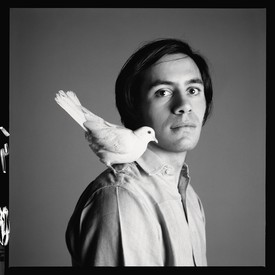
In Conversation
Claude Picasso and John Richardson
Picasso biographer Sir John Richardson sits down with Claude Picasso to discuss Claude’s photography, his enjoyment of vintage car racing, and the future of scholarship related to his father, Pablo Picasso.

